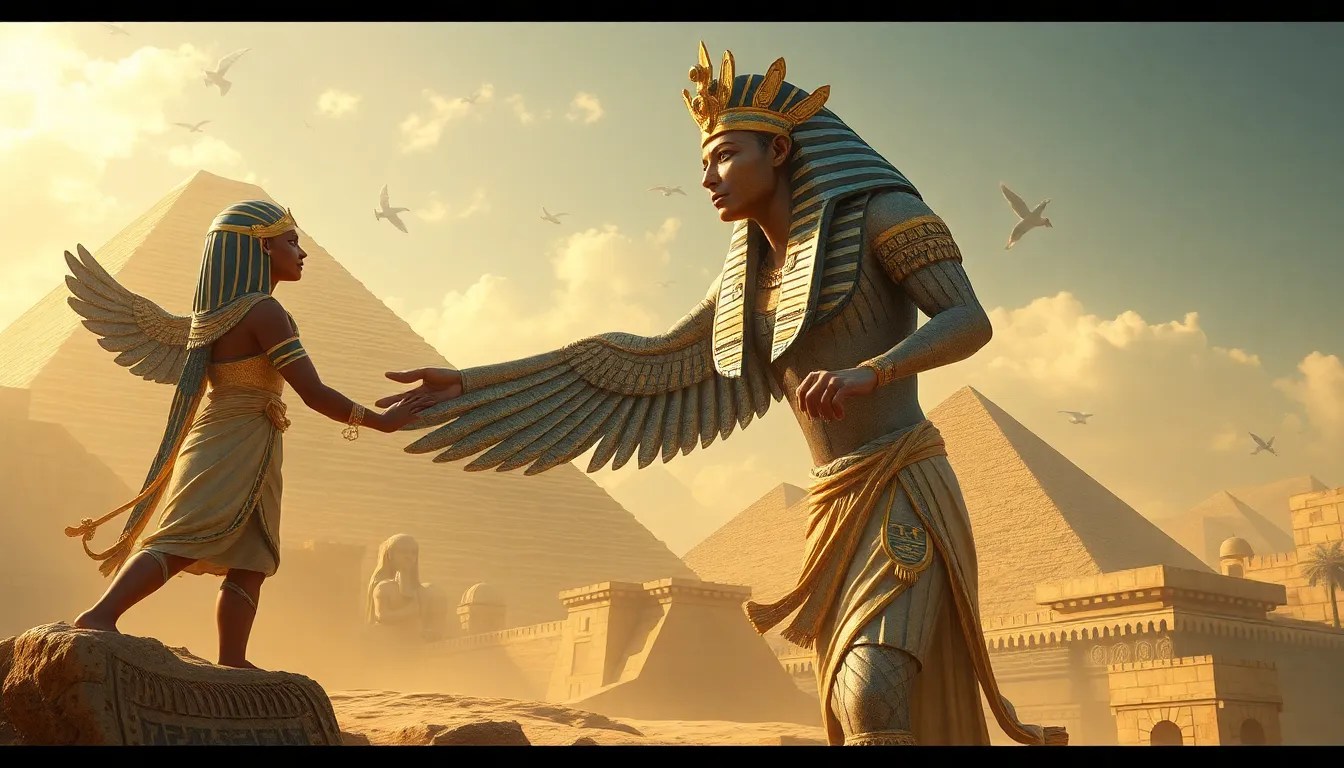How Egyptian Myths Explain the Dynamics of Love and Power
I. Introduction
Egyptian mythology is a rich tapestry of stories that reveal the beliefs, values, and cultural dynamics of ancient Egypt. It features a pantheon of deities, each embodying various aspects of life, nature, and the universe. Among these, the complex interplay between love and power stands out, showcasing how these two forces shaped human experiences.
This article aims to explore how Egyptian myths illustrate the dynamics of love and power, highlighting key deities, narratives, and cultural practices that provide insight into this intricate relationship.
II. The Role of Deities in Love and Power
In Egyptian mythology, deities play crucial roles in defining and exemplifying love and power. Some of the key deities associated with love include:
- Hathor: Goddess of love, beauty, music, and motherhood, often depicted as a nurturing figure.
- Isis: A goddess of magic and motherhood, known for her deep love and devotion to her husband Osiris.
On the other hand, deities representing power include:
- Osiris: God of the afterlife and resurrection, symbolizing the ultimate authority in the realm of the dead.
- Ra: The sun god, often regarded as the supreme ruler of the gods, embodying divine power and kingship.
The attributes of these gods influence human relationships significantly. Their stories often reflect how love can be a source of strength and power, demonstrating that the bonds between deities mirror the connections between humans.
III. Creation Myths and the Origin of Love
The myth of Isis and Osiris is central to understanding love in Egyptian mythology. This narrative tells the story of Osiris, who is betrayed by his brother Set and killed. Isis, his devoted wife, searches tirelessly for his body, symbolizing unwavering love and loyalty.
Key themes include:
- Love: Isis’s love drives her quest to resurrect Osiris.
- Loss: The death of Osiris represents profound loss, yet it leads to a deeper understanding of love.
- Resurrection: Osiris’s revival signifies the eternal nature of love and its ability to transcend death.
This myth implies that love is not just an emotional bond but also a powerful force that can affect the cosmos and human destiny.
IV. The Interconnection of Love and Political Authority
Marriage in ancient Egypt was often strategically utilized to forge political alliances, enhancing the power of ruling factions. The significance of royal couples in mythological narratives is evident in several key partnerships:
- Nefertiti and Akhenaten: This couple is known for their revolutionary religious reforms and how their love influenced the political landscape.
- Cleopatra and Mark Antony: Their relationship is a historical example of love intertwined with political ambition, demonstrating the lengths to which love can reach for power.
These narratives highlight how love served as a mechanism for political cohesion and expansion, reflecting the dynamics of power in society.
V. The Symbolism of Love in Egyptian Art and Literature
Art and literature in ancient Egypt often depicted the dynamics of love and power. Artistic representations ranged from intimate scenes of couples to grand depictions of gods in loving embraces. Common themes include:
- Intimacy: Artworks often showcased the tender relationships between deities and mortals.
- Royal iconography: Pharaohs were often depicted with their queens, symbolizing unity and strength.
Literary texts, such as love poetry and mythological tales, further illustrate these dynamics, showcasing romantic relationships among gods and humans, which reflect societal values and hierarchies.
VI. Love and Betrayal in Egyptian Myths
Betrayal is a recurring theme in Egyptian mythology, deeply intertwined with love and power. The story of Set’s treachery against Osiris exemplifies this dynamic. Set’s betrayal leads to Osiris’s death and the subsequent chaos that ensues.
Key lessons from these narratives include:
- The fragility of love: Love can be easily undermined by betrayal and jealousy.
- The consequences of treachery: Betrayal disrupts the balance of power and leads to conflict.
These myths serve as cautionary tales, reminding audiences of the delicate nature of love and the dire consequences of betrayal.
VII. The Legacy of Egyptian Myths in Modern Interpretations
Contemporary culture continues to draw upon Egyptian myths, reflecting the relevance of love and power dynamics in modern relationships. Films, literature, and art often reinterpret these ancient stories, showcasing their enduring appeal. Examples include:
- Literature: Modern novels and poetry often reference Egyptian mythology as a means of exploring complex relationships.
- Film: Movies like “Cleopatra” portray the dramatic interplay of love and political power, capturing audiences’ imaginations.
These adaptations highlight the lasting influence of Egyptian mythology on contemporary narratives, demonstrating that the themes of love and power remain relevant across time.
VIII. Conclusion
The exploration of love and power in Egyptian mythology reveals a complex relationship that continues to resonate today. The myths surrounding deities like Isis, Osiris, Hathor, and others illustrate how intertwined these forces are, shaping not only the lives of the gods but also the experiences of humans.
As we reflect on these ancient narratives, it becomes clear that the dynamics of love and power provide valuable insights into our modern lives. Further exploration of these myths can enhance our understanding of contemporary relationships and societal structures.




